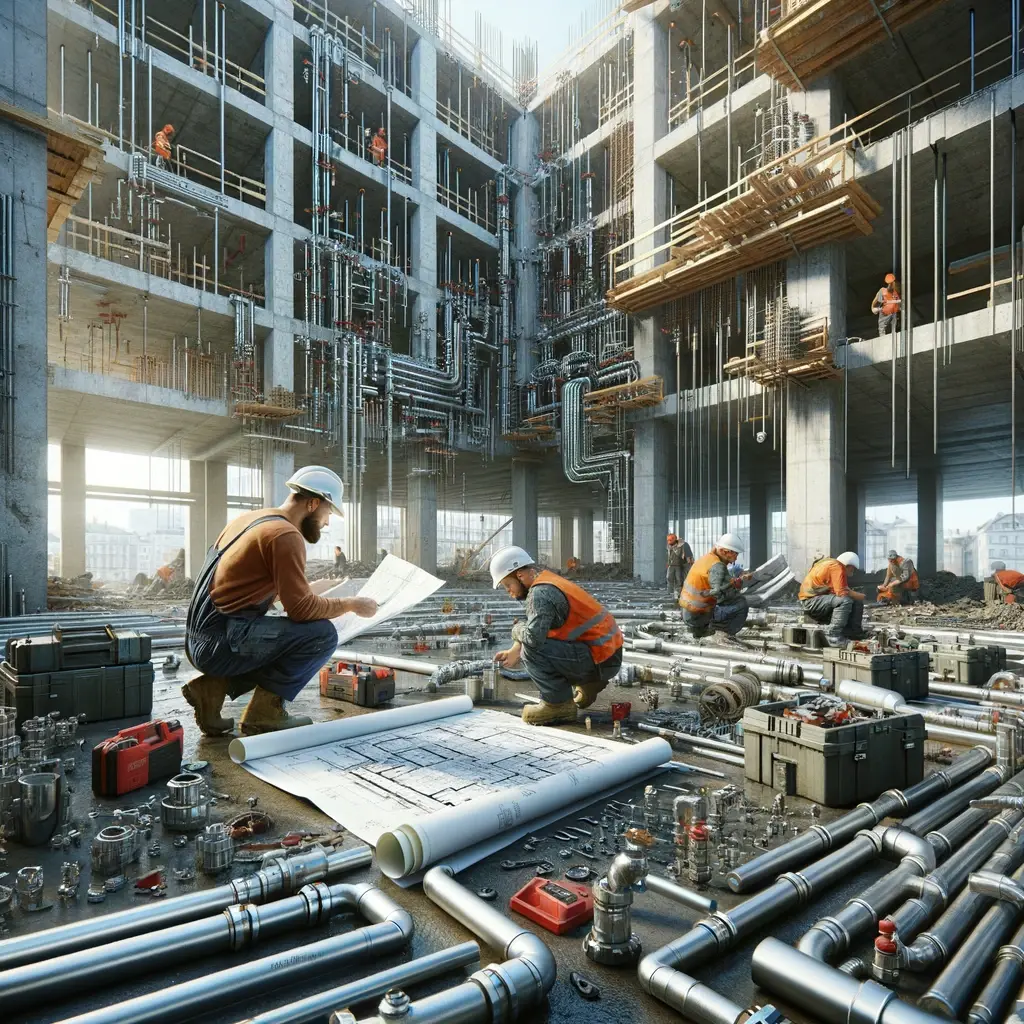The Impact of Modular Construction on Plumbing Systems
Modular construction methods are changing the way plumbing systems are designed and installed. Here are key points regarding the impact of modular construction on plumbing systems:
- Modular construction streamlines the process, making plumbing installation more efficient.
- Plumbing systems in modular construction can be prefabricated off-site, saving time and reducing on-site labor costs.
- The design of plumbing systems in modular construction must consider the assembly and transportation of modules.
- Modular construction often requires innovative plumbing solutions to ensure proper functionality and durability.
- Overall, modular construction is revolutionizing the plumbing industry by promoting faster, cost-effective, and efficient plumbing system installations.
Traditional Plumbing Systems vs. Advanced Plumbing Systems
Traditional Plumbing Systems rely on a series of separate parts that need to be assembled on-site, leading to potential inefficiencies and delays in construction projects. In contrast, Advanced Plumbing Systems, such as prefabricated modular systems, come pre-assembled and ready to be installed quickly and easily. These advanced systems offer benefits like increased efficiency, reduced labor costs, and improved quality control.
Benefits of Implementing Advanced Plumbing Systems in Modular Construction
Advanced plumbing systems in modular construction offer numerous benefits. Here’s why you should consider implementing them:
- Increased efficiency and speed in the construction process
- Cost savings due to reduced labor and material requirements
- Enhanced durability and longevity of the plumbing infrastructure
- Improved sustainability with water-saving features
- Greater flexibility in design and layout options
Understanding Prefabricated Plumbing Modules
Prefabricated plumbing modules are pre-built plumbing systems made off-site and then installed on-site. These modules help streamline the construction process by being quick to install and reducing on-site labor and material costs. These systems are designed to fit seamlessly into the modular construction framework, ensuring efficient water distribution and waste management in buildings. Prefabricated plumbing modules can improve the overall quality of plumbing installations, minimizing errors and ensuring consistency.
Innovations in Plumbing Fixture Design
Plumbing fixture design has evolved to meet the unique needs of modular construction projects. Manufacturers have created fixtures that are space-saving, easy to install, and aesthetically pleasing. Some key innovations include water-efficient fixtures that help reduce water consumption, touchless faucets for improved hygiene, and modular fixture units that can be easily connected and disconnected. These advancements in plumbing fixture design not only streamline the installation process but also contribute to creating more sustainable and functional plumbing systems in modular construction.
Water Conservation Technologies in Modular Construction Plumbing
Water conservation technologies in modular construction plumbing are crucial for reducing water usage. Some key technologies include:
- Low-flow fixtures, like faucets and showerheads, which restrict water flow to save water without affecting performance.
- Dual-flush toilets that offer a choice of flush volumes, reducing water wastage.
- Greywater recycling systems, which treat wastewater from sinks and showers for non-potable uses like flushing toilets.
- Sensor-operated fixtures that only release water when needed, minimizing unnecessary usage.
By incorporating these technologies into plumbing systems for modular construction, significant water savings can be achieved while maintaining functionality.
Importance of Proper Drainage in Modular Buildings
Proper drainage in modular buildings is crucial to prevent water damage and maintain the structural integrity of the building. Without effective drainage, water can seep into the building, causing mold growth, foundation problems, and other costly issues. It is essential to design and install a reliable drainage system to ensure that water is efficiently directed away from the building to prevent any potential damage.
Integration of Smart Technology in Modular Construction Plumbing
Smart technology is becoming increasingly integrated into plumbing systems for modular construction. Smart devices such as sensors and control systems are being used to monitor water usage, detect leaks, and regulate temperature. These technologies help improve efficiency, reduce maintenance costs, and enhance overall building performance. The integration of smart technology in modular construction plumbing is revolutionizing how buildings are designed and operated, leading to more sustainable and intelligent structures.
Ensuring Sustainability and Efficiency in Plumbing Systems
To ensure sustainability and efficiency in plumbing systems for modular construction, utilizing advanced materials like PEX and CPVC pipes can help reduce water waste and energy consumption. Incorporating modern fixtures with low flow rates further enhances the eco-friendliness of the plumbing system. Proper insulation of pipes helps prevent heat loss and maintain water temperature efficiently. Additionally, installing smart water meters allows for better monitoring and conservation of water usage in modular buildings.
Future Trends in Plumbing Systems for Modular Construction
Plumbing systems in modular construction are evolving to be more efficient and sustainable. Water-saving fixtures are becoming a popular choice, reducing water usage without sacrificing performance. Smart technology is also being integrated, allowing for remote monitoring and control of plumbing systems. Flexible piping materials are being used to adapt to the unique needs of modular construction, allowing for easy installation and maintenance. Overall, the future trends in plumbing systems for modular construction focus on sustainability, efficiency, and adaptability to meet the growing demands of the construction industry.


